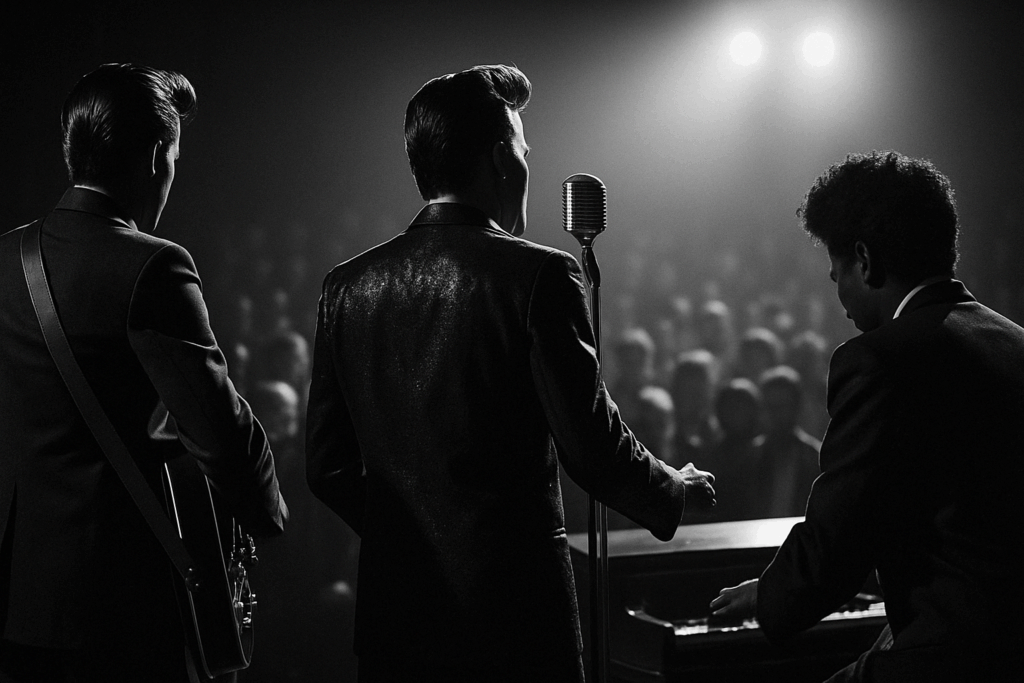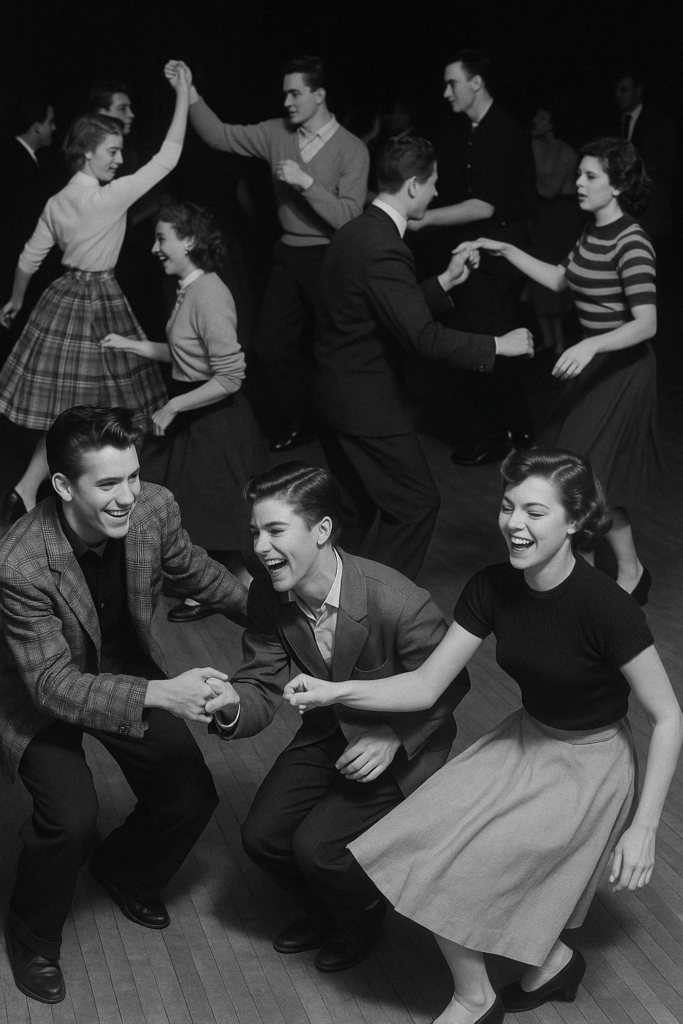
The 1950s witnessed a cultural revolution that would forever change the landscape of popular music. Rock and roll burst onto the scene with an infectious energy that challenged conventions and united generations through shared musical experiences. This transformative era laid the essential foundation for all rock music that followed, creating ripples that continue to influence artists today.
The Origins: A Perfect Cultural Storm
Rock and roll didn’t emerge from a vacuum. It was born from the magnificent convergence of several existing American musical traditions:
- Rhythm and Blues: The driving force of R&B from African American communities provided the backbone rhythm and energy
- Country and Western: The storytelling tradition and guitar techniques from rural white communities
- Gospel: The passion, vocal techniques, and emotional delivery from church music
- Jazz: The improvisational spirit and some instrumental techniques
This cultural crossroads occurred against the backdrop of significant social changes in post-war America. Teenagers were emerging as a distinct demographic with disposable income, and new technology like vinyl 45 rpm records made music more accessible than ever before.

The Pioneers Who Changed Everything
Elvis Presley: The King
No discussion of rock and roll’s birth is complete without Elvis Presley. When he stepped into Sun Records in Memphis in 1954, music history changed forever. Combining a southern drawl with R&B energy and an electrifying stage presence, Elvis became rock’s first superstar. Hits like „Heartbreak Hotel,“ „Hound Dog,“ and „Jailhouse Rock“ demonstrated his unique ability to synthesize black and white musical traditions into something entirely new.
„Rock and roll music, if you like it, if you feel it, you can’t help but move to it. That’s what happens to me. I can’t help it.“
— Elvis Presley
Chuck Berry: The Poet and Guitar Revolutionary
If Elvis was rock’s first superstar, Chuck Berry was its first complete artist. Berry crafted intelligent lyrics that spoke to teenage experiences, and his revolutionary guitar playing—combining country techniques with blues bends and a driving rhythm—created the template for rock guitar. Songs like „Johnny B. Goode“ and „Roll Over Beethoven“ still stand as perfect rock and roll examples, with riffs that would influence everyone from The Beatles to AC/DC.
Little Richard: The Wild Spirit
With his flamboyant performance style, pounding piano, and unmistakable „woooo!“ scream, Little Richard injected rock and roll with theatrical energy and unbridled enthusiasm. His songs „Tutti Frutti“ and „Long Tall Sally“ captured the essence of rock’s rebellious spirit and demonstrated that this new music form would break all the rules.
The Cultural Impact
The emergence of rock and roll represented more than just musical evolution—it sparked profound cultural changes:
- Integration: Rock and roll broke racial barriers, with white teenagers embracing music rooted in African American traditions
- Youth culture: The music provided a soundtrack for teenage rebellion and helped define a distinct youth identity
- Performance style: High-energy performances replaced the stationary, formal concert traditions of previous eras
- Fashion revolution: Rock stars inspired new fashion trends that emphasized individuality and rebellion

The Enduring Legacy
The 1950s pioneers established patterns and principles that would define rock music for decades to come:
- The electric guitar as the central instrument
- The standard rock band format (guitar, bass, drums, vocals)
- The connection between visual performance and musical expression
- The rebellious spirit that challenges societal norms
- The 3-minute song format optimized for radio play
These elements formed rock’s DNA, which would mutate and evolve but never lose the core attributes established during this foundational period. Every rock band today—whether they play hard rock, progressive rock, punk, or any other subgenre—owes a debt to these 1950s innovators who dared to create something new.
Conclusion: Rock’s Foundation
The birth of rock and roll in the 1950s represents one of music’s most pivotal moments—a perfect collision of cultural influences, technological developments, and talented artists that created something greater than the sum of its parts. As we explore the rich history of rock music through this series, we’ll see how the groundwork laid by Elvis, Chuck Berry, Little Richard, and their contemporaries enabled all the innovations that followed.
Rock and roll was more than just a musical style—it was a cultural revolution that changed how people related to music forever, establishing patterns of musical creation, distribution, and consumption that continue to influence artists today.
